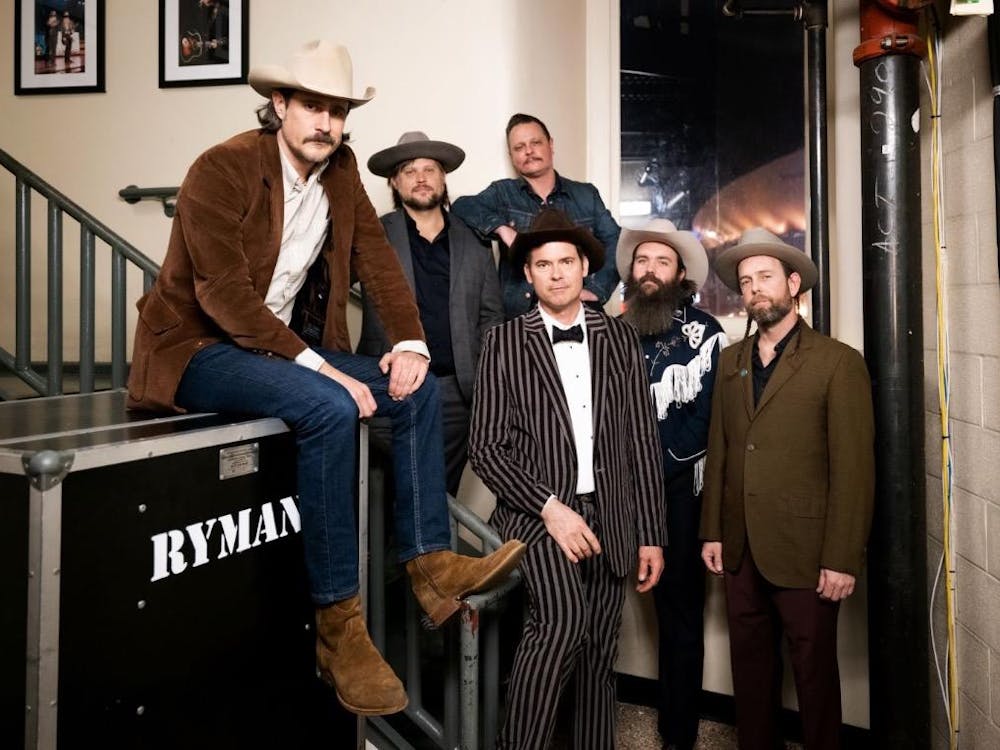FX’s “Fargo” has always been a great adaptation of the Coen brothers’ 1996 film of the same name, particularly with a first season that felt right at home in the original’s snowy, barren but funny universe of good and evil. The show’s second and third seasons grew progressively more ambitious with new sets of stories set across different cities and time periods with loose connections to the original season. It comes as little surprise then, that the fourth season is the story’s most complex and sprawling iteration yet. The new season, which premiered with two episodes on FX Sunday night, is set in 1950s Kansas City and chronicles a conflict between the mafia and a new crime syndicate.
The progressive seasons of “Fargo” have not only gotten broader in scope, but in perspective as well. The first season’s Lester (Martin Freeman) was a white-collar criminal who felt bullied by the world, the second season expanded the scope to a larger 1970s crime conspiracy and the third season questioned the notion of truth itself while having Ewan McGregor play two twins. In this fourth season, the show expands further and asks the audience what it means to be an American by presenting a huge cast of characters, many of whom are marginalized for various reasons.
Ethelrida Smutny (E'myri Crutchfield) is a precocious kid from a biracial family who starts off the season learning that her parents, funeral directors Thurman (Andrew Bird) and Dibrell (Anji White), are struggling to pay back a loan to the mafia, who is ready to break legs.
The mafia is headed by Josto Fadda, (Jason Schwartzman) who assumes leadership after the shooting of family patriarch Donatello (Tommaso Ragno). The Fadda family is engaged in a touchy relationship with a newer, hungrier syndicate led by Loy Cannon (Chris Rock), a confident and ambitious Black man escaping the Jim Crow South to make his living, as the show calls it, the “old-fashioned way” — through crime. The mafia and Cannon’s syndicate exchange firstborn sons to ensure their alliance, but the death of Donatello causes uncertainty as Cannon and his right-hand man, Doctor Senator (Glynn Turman), insist territory was promised to them.
In the first two episodes, “Welcome to the Alternate Economy” and “The Land of Talking and Killing,” these characters and many more are introduced in a series of sequences that document cyclical violence throughout the 20th century as Jewish, Irish and Italian gangs succeed each other as kings of Kansas City’s underworld. Also of note is the wildcard Oraetta Mayflower (Jessie Buckley), an eccentric nurse who prescribes illicit drugs to Josto and tries to win sway with Ethelrida for likely nefarious reasons. If all of this sounds confoundingly complex, that’s because it is. “Fargo” has never shied away from establishing a broad web of characters, but the fourth season amps up the count to such a degree that it is easily overwhelming.
The binding force between all of these characters is minority status. Anti-Italian immigrant prejudice and racism against African Americans represent the primary barriers to American society and motivate many of the characters towards the so-called alternative economy. Other characters, such as Oraetta, are rejected by society for their odd behavior, and characters such as federal agent Odis Weff (Jack Huston) are stigmatized for disabilities like twitching.
Unlike the white-collar world of crime prior seasons primarily explored, the fourth season’s events suggest that no one enters the alternative economy from a comfortable position. “Fargo’s” characters are still exaggerated, larger-than-life personalities built from comedy tropes, but they’ve never been this socially and demographically diverse.
As is usual with a Noah Hawley project, the production, comic-book style split-panel editing and original soundtrack by music collaborator Jeff Russo do a lot of heavy lifting to keep the complex story intriguing and well stylized. Not all of the characters are as fleshed out as they could be, but with plenty of episodes left to go in the coming weeks, more of the story is sure to come. Viewers who have stuck around with “Fargo” know the drill: expect lots of cartoonishly extreme violence, plenty of strange moments and laughter in unexpected places.
If “Fargo’s” fourth season can continue to wring good performances from its A-Listers like Chris Rock and find a focus as its complex plot thickens, then good things are to come. However, Hawley’s other FX show, “Legion,” suffered from similar complexity issues despite its intriguing superhero premise and groundbreaking visual effects. Hawley has already pushed the Coen brother’s film universe to its limits, but the question remains — can he do it again in yet another Midwestern setting?







